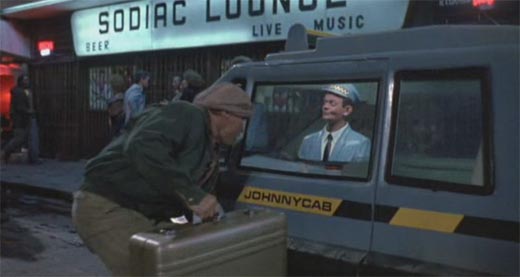|
|
The JohnnyCab: Total Recall's Look at AI Vehicles
The 1990 film Total Recall, was notable both for being a Schwarzenegger action flick, and for bringing to life with well made visuals, a lot of long-held beliefs in robotics, AI, and brain interfacing. Other films have done the same of course, but generally they only pick on one or two, unless they are a film like BladeRunner. Total Recall's visuals are often very handy for showcasing in an easily digestible yet vivid form, how technologies that are still being worked on in modern times, should integrate into normal life. The Johnny Cab is no exception. It is a completely self-sufficient, AI controlled taxi cab. It possesses a motorised mannequin upper torso on a swivel axis inside, so humans have something vaguely familiar to interact with (ignoring that it does not pass the uncanny valley), but in reality they are speaking with the car. When a passenger gets in, they state a destination, which the car matches up with a list of locations it knows, and then it pulls out into traffic, navigating between other vehicles - many human controlled - in order to use the normal road system to get to its destination. Lacking an actual human driver gives more space for the passengers as no front seats are required, and the cab can work 24/7 without a break, just requiring fuel for power. It possesses unobtrusive sensor bars on the front and back, as demonstrated in the film, to allow it to monitor the road around it and react in real-time to changing conditions, actually making it safer than a human driver. In the two decades since the film came out, that level of AI has not been recreated, even though that is precisely what DARPA, the American Defence Advanced Research Projects Agency has been working on for much of that time. We are getting quite close, with the DARPA urban challenge of 2007 producing three cars that actually drive in the same way as the JohnnyCab does, even if they are literally festooned with sensors, and have no room for passengers due to the large amount of processing equipment in the back.
It is almost certain at this point that the JohnnyCab lays in our near-term future, as the level of AI it requires, we now have. What we lack, is the ability to package that AI in a small enough form factor, and the sensors unobtrusive enough, to allow integration into normal life. Still, the day of the robot cab, is indeed approaching. ReferencesSelf-Driving AI Vehicles In 2010 The 2007 DARPA Urban Challenge
Staff Comments
|
|
|||||||||||||||||||||||||
|
|||||||||||||||||||||||||||



